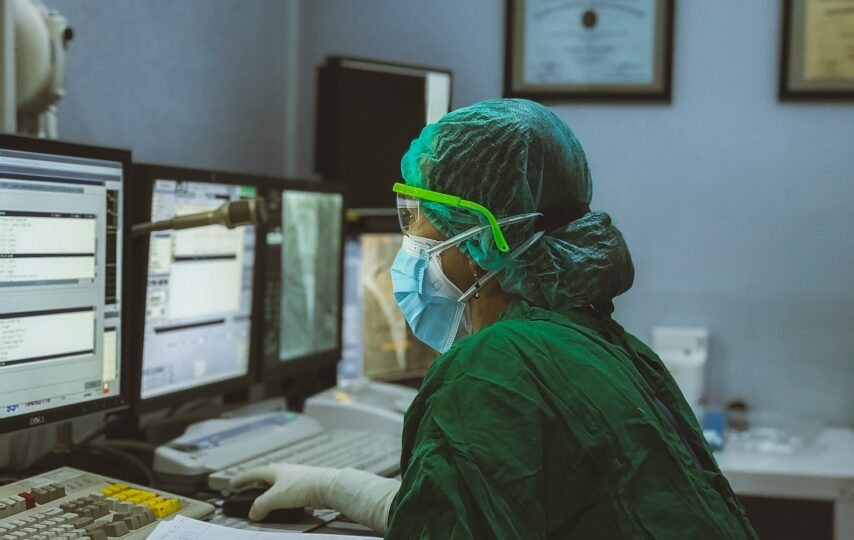The healthcare landscape has evolved for the better after the pandemic. Technology has emerged as a savior, taking patient care and services to the next level. The healthcare tech market in the US was valued at $8.4 billion in 2023 and is projected to reach a staggering $17.3 billion by 2028. The growth rate is impressive at 15.6% per annum.
Most medical facilities already have some technology solutions in place. These innovations are not only for large hospitals and research organizations. Even local clinics and practices adopt them to stay relevant and competitive. If your medical practice lags on this front, you cannot expect to stand apart in a competitive market.
Technology can streamline operations, boost overall efficiency, and enhance patient care. Besides these basics, there are many ways it can help you grow your clinic. In this article, we will share some measures to leverage health tech for the growth of your medical practice.
Enhance Accessibility with Telemedicine
Telemedicine emerged as a savior during the pandemic when in-clinic visits were reduced to negligible. Statistics show that 52% of American adults reported using a live video call to connect with their healthcare provider. The trend hasn’t slowed even after the pandemic is far behind. Telemedicine is also a cornerstone of remote patient monitoring by a provider from a different location.
By offering telemedicine consultations, you can make your services more accessible and convenient to patients, regardless of the physical distance. They can consult practitioners remotely, minimizing the need for in-person visits to the facility.
The system is ideal for routine check-ups, consultations for minor ailments, and follow-up appointments. You can expand your customer base without investing in additional space and infrastructure. Not to mention, your patients are happy with the flexible healthcare option.
Provide Continuous Care with Remote Monitoring
While telemedicine covers regular appointments and medical emergencies, remote monitoring facilitates the provision of continuous care to patients. The system has the potential to improve individual outcomes and increase the overall efficiency of healthcare delivery. According to CoachCare, it closes the gaps between office visits, even for patients who drop in regularly.
With remote patient monitoring solutions, clinics can enhance post-discharge care, promote patient engagement, and enable early intervention. It is like ensuring that your patients have a healthcare expert checking their health at all times. These solutions drive growth by making clinics capable of delivering personalized, proactive, and patient-centered care.
Manage Patient Data with an Electronic Health Records (EHR) System
Managing information may become challenging as your medical practice grows and attracts more patients. You will surely struggle to organize paper-based records and access information on the fly. Imagine the stress of finding a patient’s file during an emergency when you have hundreds of files to sift through.
Consider moving from traditional record-keeping to an Electronic Health Records (EHR) system. Besides eliminating the hassle of managing physical files, EHRs provide a centralized digital platform to store and access patient information. Clinicians can get data quickly and collaborate on cases for quicker decision-making and better quality of care. EHRs support compliance and help streamline the billing process.
Improve Diagnostics with Artificial Intelligence
Artificial Intelligence has made it big in all industries, and healthcare is no exception. The global artificial intelligence in diagnostics market value touched $1.1 billion in 2022, and it is expected to reach $7.4 billion by 2032. Incorporating AI and Machine Learning into your diagnostic processes can improve accuracy and efficiency.
For example, advanced AI algorithms can analyze medical imaging with higher precision for early disease detection. Additionally, AI tools can identify potential health risks by analyzing patient data. With a better view of risk factors, providers can suggest personalized treatment plans and proactive recommendations to prevent disease.
Protect Patient Data with Cybersecurity Measures
According to 2023 data, more than 540 healthcare organizations reported data breaches to HHS, affecting more than 112 million Americans. These numbers underscore the significance of ensuring data privacy. Whether you run a multispecialty hospital or a local clinic, implementing cybersecurity measures should be a priority.
As organizations adopt digitization, they must implement robust cybersecurity measures. These include frequent software updates, secure network protocols, and employee training. Additionally, invest in advanced encryption technologies and ensure compliance with healthcare data protection regulations, such as HIPAA. These measures enable you to win patient trust and achieve your growth targets.
Adopting healthcare technology does more than keep your medical practice relevant in an evolving landscape. It ensures loyalty, longevity, and success for your business through better clinical outcomes and patient satisfaction. You can implement these innovations to grow and thrive in the digital age.







